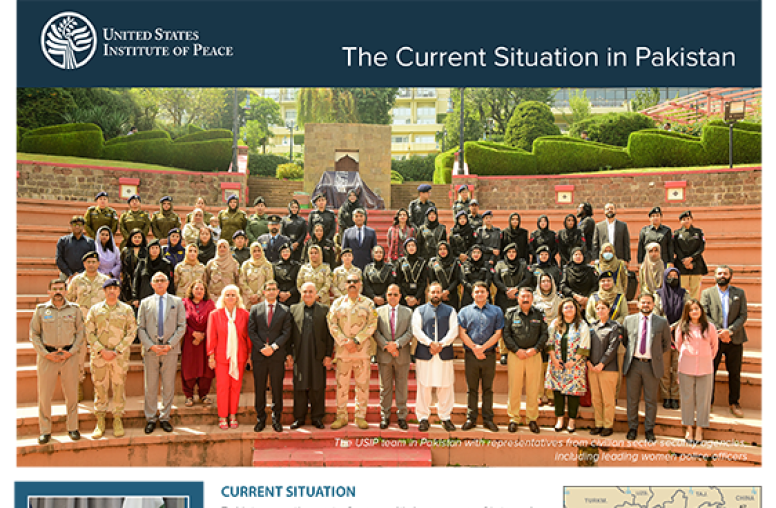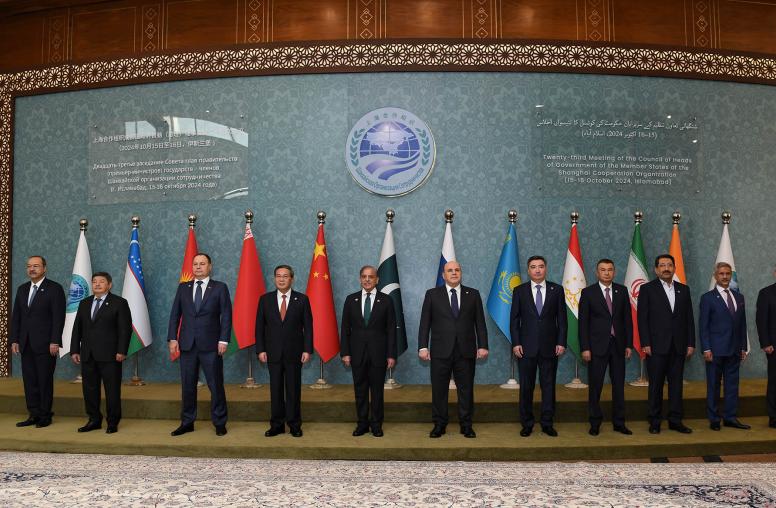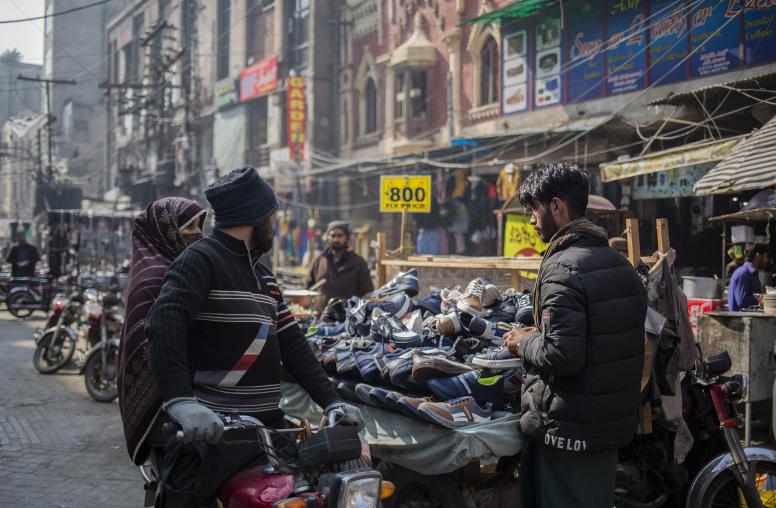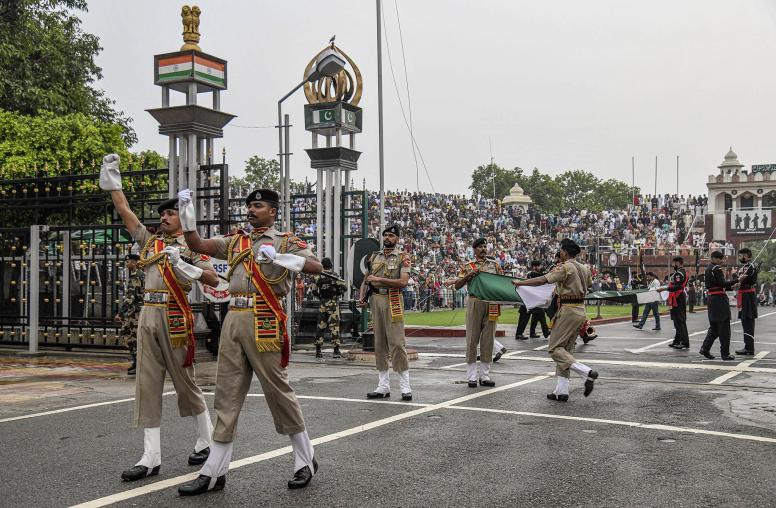Pakistan’s Shifting Political and Economic Winds
Prime Minister Khan’s government faces pressure from multiple sources.
There was an air of optimism in May 2021, when Pakistan’s finance minister, Shaukat Tarin, told Bloomberg that his government would spend almost $6 billion to create jobs and stimulate growth. The aim, he argued, was to achieve a GDP growth rate of over 5 percent. Fast forward to October and the tone has significantly changed, with the finance minister informing an audience in Washington that growth had to be moderated to prevent macroeconomic risks from materializing, meaning that Pakistan cannot afford to grow too fast.

A Change of Tone
This change of tone is not limited to the economy. Speculation about civil-military tensions, opposition party protests and growing terrorism in Pakistan’s northwestern regions bordering Afghanistan are further complicating the situation. These developments are threatening to create the perfect storm that may significantly erode Prime Minister Imran Khan’s chances of reelection in the 2023 general elections.
Much of the near-term economic instability has been driven by a global commodity price boom. However, it is important to recognize that the inflationary storm engulfing Pakistan is far more significant than in other peer economies: From January 2020 to September 2021, food prices in Pakistan increased by almost 18 percent compared to almost 6 percent across the border in India. Much of this disparity has to do with a lack of forward-looking agricultural policies in Pakistan and dysfunctional markets in key commodities like wheat, where the government intervenes across the value chain.
A Return to Austerity Measures?
This bout of inflation comes hot on the heels of a pandemic during which Pakistan’s economy has experienced a negative growth rate of 0.4 percent, and a pre-pandemic austerity cycle that eroded the purchasing power of millions of citizens. After more than three years of misery, citizens are experiencing more pain as the latest round of price adjustments works its way through the economy. The expected resumption of the International Monetary Fund (IMF) program in the coming weeks may further force the government’s hand, leading to an increase in power tariffs and a return to highly unpopular austerity measures.
This toxic combination of high inflation and low economic growth has once again energized opposition parties, including the Pakistan People’s Party (PPP) and the Pakistan Muslim League-Nawaz (PML-N), who have announced protests against Khan’s government. These announcements occurred in parallel with another multi-day protest by the Tehreek-e-Labbaik Pakistan (TLP), a far-right religious political party that has frequently demonstrated its ability to mobilize thousands of supporters across Pakistan. At least three security personnel were killed in this most recent round of protests and the government once again succumbed to pressure, agreeing to release arrested members of the party, unfreeze its bank accounts and promising to fulfill all other commitments, according to Interior Minister Sheikh Rashid Ahmed.
Civil-Military Rift Emerges
Complicating this situation are reports of an emerging rift between the prime minister and Pakistan’s military establishment. The catalyst for this feverish speculation has been the status of the outgoing director-general of the Inter-Services Intelligence (ISI). While the Inter-Services Public Relations (ISPR), the public relations arm of Pakistan’s military, announced a change of guard at the ISI on October 6, the Prime Minister’s office took almost three weeks to issue the formal notification. While there have been conflicting reports over what has transpired over the last few days, the lack of clarity has created an impression that Chief of Army Staff Gen. Qamar Javed Bajwa and Khan are no longer on the proverbial same page that government ministers used to boast about.
While it is impossible to have complete clarity on what is going on in Islamabad and Rawalpindi, the change of leadership at the ISI marks an end of the triumvirate that has underpinned political stability in Pakistan since the 2018 general elections. This means that the emerging dynamic between Khan, Bajwa and the incoming director-general of the ISI, Lt. Gen. Nadeem Anjum, will have far-reaching repercussions not only for the future of the Khan government, but also for the ongoing but floundering democratic experiment that Pakistan has been going through since 2007-08.
An Uptick in Terrorist Attacks
All of this is occurring at a time when there has been a significant uptick in terror attacks in the former tribal areas of Pakistan. As of October 22, 169 security personnel had been killed in terror attacks across the country so far this year, placing 2021 on track to be the deadliest year for Pakistani forces since 2017.
Khan’s public comments confirming talks with some factions of the Tehreek-e-Taliban Pakistan (TTP) have further sown confusion given the fact that the TTP has increased the frequency of its attacks on Pakistani security forces. Reports also indicate that the United States and Pakistan are trying to reach an agreement that would allow the United States to use Pakistani airspace “to conduct military and intelligence operations in Afghanistan.”
Prime Minister Faces an Uncertain Future
These developments are coming together to cast a shadow over the future of the PTI government. Just a few weeks ago, government interlocutors had total confidence in their ability to rapidly grow the economy in 2022, rebuild popularity among the masses and maintain the institutional consensus necessary to win the upcoming general elections. These interlocutors would confidently state that the only viable option was Khan’s Pakistan Tehreek-e-Insaf (PTI) party and that the prime minister would return to power with a bigger mandate in 2023.
This confidence has since eroded and may shatter in the coming months. While most government representatives are expressing cautious optimism that things will turn around in the coming weeks, the fact of the matter is that these are rocky times for the PTI: Inflation is fueling mass discontent, particularly among the urban middle class, a key voter base; political elites, especially those who have advanced in their careers by reading the shifting winds from Rawalpindi, are feverishly recalibrating their political radar; and opposition leaders have been buoyed by the change of guard in Balochistan, where the government-allied chief minister has been forced out, and the cracks in the post-2018 civil-military alliance.
Government spokesmen may very well be right that this is much ado about nothing, and the PTI may maneuver its way out of these turbulent times, notably because alternate political choices may be less desirable. But those who are well-versed in Pakistan’s history may argue that transient events have historically upended the status quo within a matter of months and brought about drastic changes that many within the corridors of power dismissed as fantasies.
Uzair Younus is a visiting senior policy analyst for the South Asia program at the U.S. Institute of Peace.



